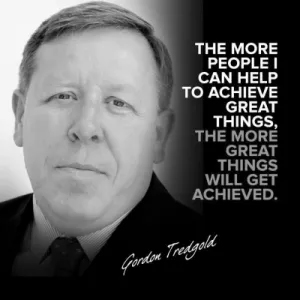
Setting big, ambitious and inspiring goals for our teams is one of our responsibilities as leaders.
These may be goals that were previously thought to be improbable but which, with the right preparation, planning, commitment, and drive, could be accomplished.
However once these goals have been achieved, then we have redefined the baseline of what’s possible, i.e. once the breakthrough is made, then it opens up to a whole new world of possibilities.
For example, for years many people thought that it was physically impossible to run under 4 minutes for the mile. There were many who thought it was physically impossible, or even dangerous to achieve.
However, once Roger Bannister had broken the 4-minute mile barrier in 1954 with a time of 3:59.4 seconds, he had redefined what was possible, he had shown what could be done.
In the first half of the 20th century, not one single person had achieved this feat, nor had they got within one second of breaking the barrier.
Yet 46 days after Bannister had achieved this amazing feat, the best time for the mile was improved yet again, this time by 1.4 seconds by Jim Landy, who ran it in a time of 3:58.4.
Since Roger Bannister achieved this feat, 1,175 people have run a sub-4-minute mile, and the current world record is 3:43.13 – a full 17 seconds quicker than Bannister ran it.
This is the same with our teams. Once we have achieved a big goal, they have a new belief of what is possible, and what they are capable of.
They have a much stronger belief in their abilities.
At one firm where I worked, I decided to set a bold goal for our enhancement of on-time delivery, our performance had been not that great, for years it had wallowed around 30-35%.
I proposed a goal of 70%. When announced there was some hesitation, some people thought the target was impossible, but we knew what some of our challenges were and we had some proposed solutions for them, so the team agreed with the goal.
Not only did we achieve the goal, but we exceeded it, delivering 81% on time.
With this achievement, we had redefined what was possible, we had a different view of what we were capable of, the team had a new sense of respect for themselves, and were much more open to accepting bold goals.
Not just in the area where we had had some success, but also in other areas.
The following year, the team not only accepted a target of 90% for enhancements, but they also accepted goals to reduce major system outages beyond the best year ever by 40%, which was very aggressive.
Not only were these targets achieved, but they were also exceeded, with 95% of enhancements delivered on time, and major system outages reduced by a whopping 80%.
This year when it came to target setting, the team were very eager to propose new bold and aggressive targets themselves.
This was now our new normal, the desire to set aggressive goals.
If you want to learn more about creating highly engaged teams or being a better leader click the link to make an appointment to talk about how I can help.
